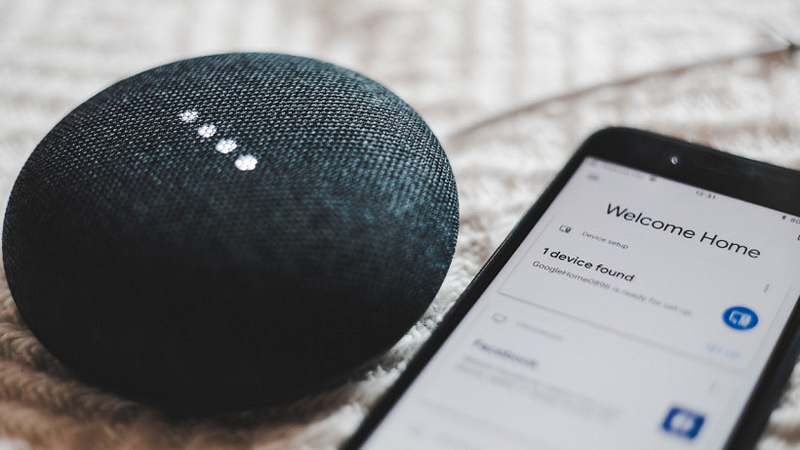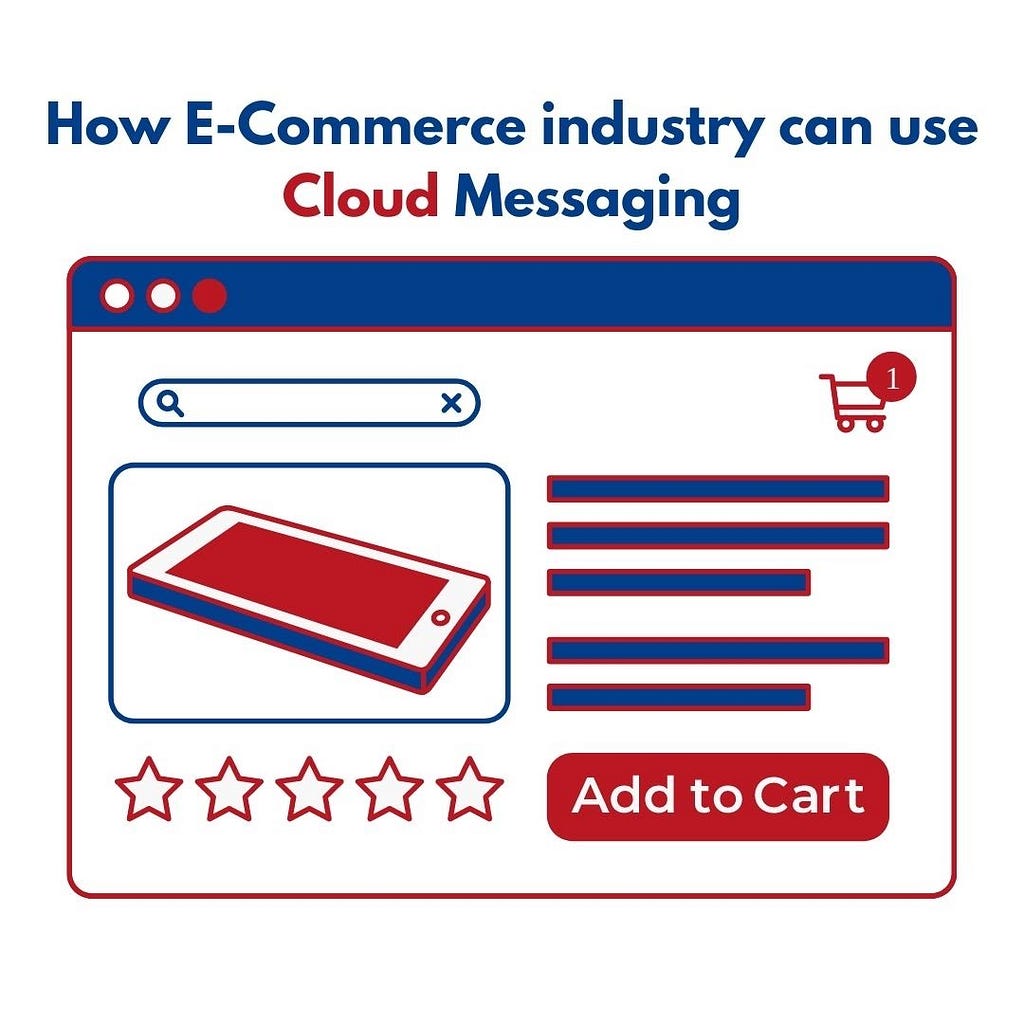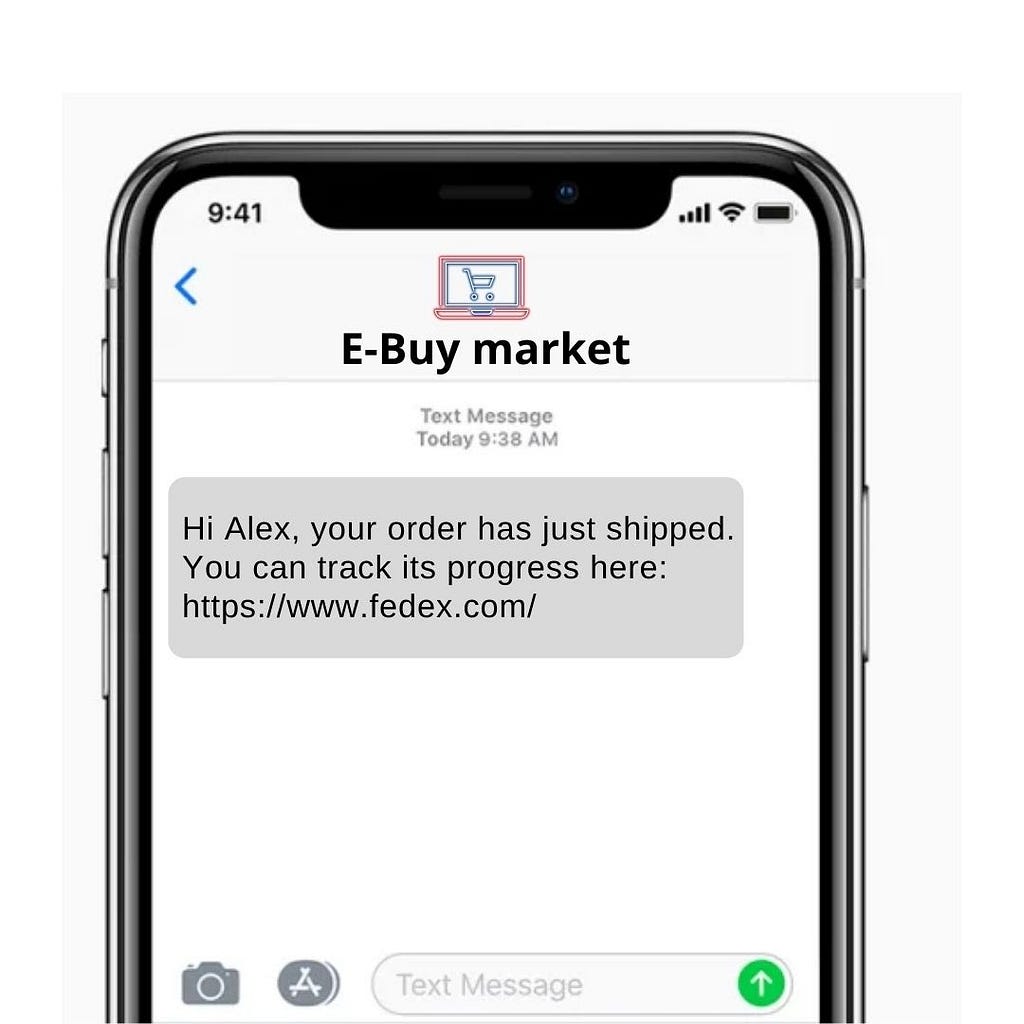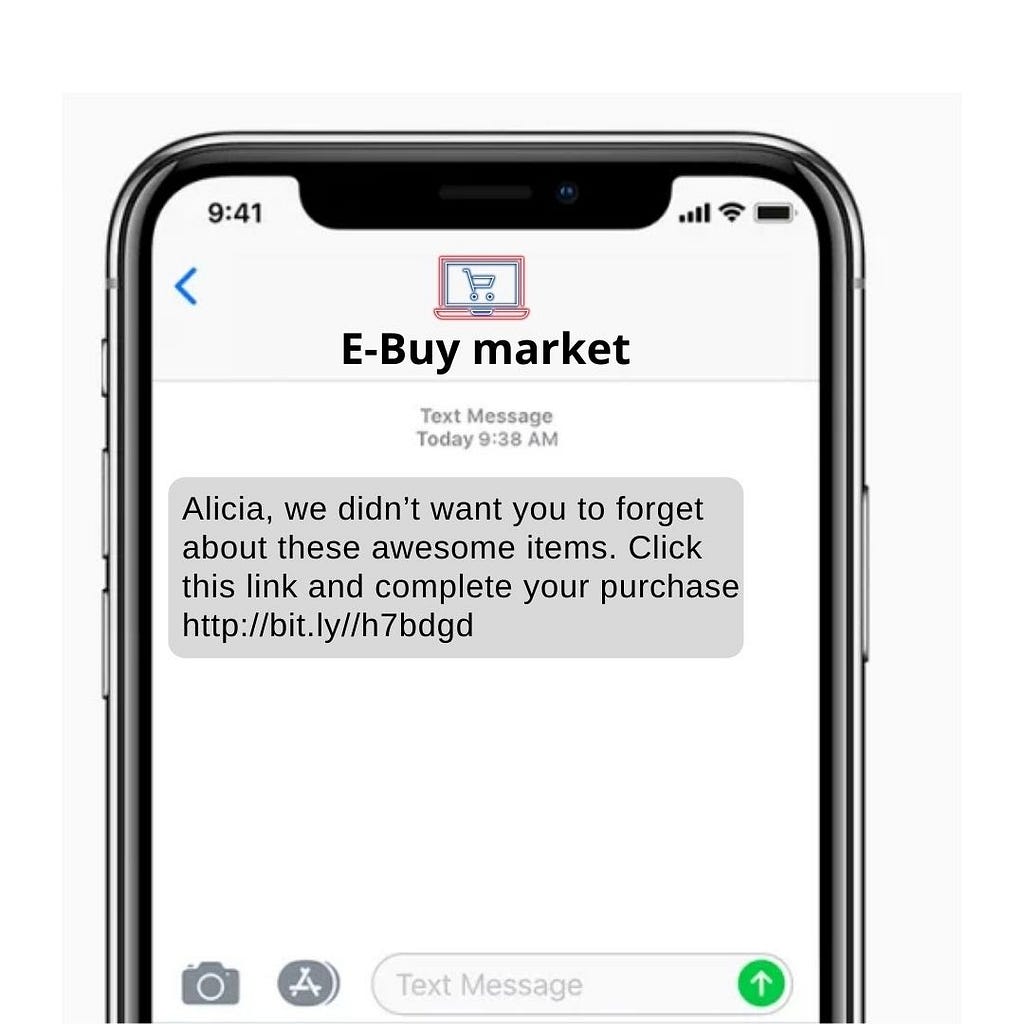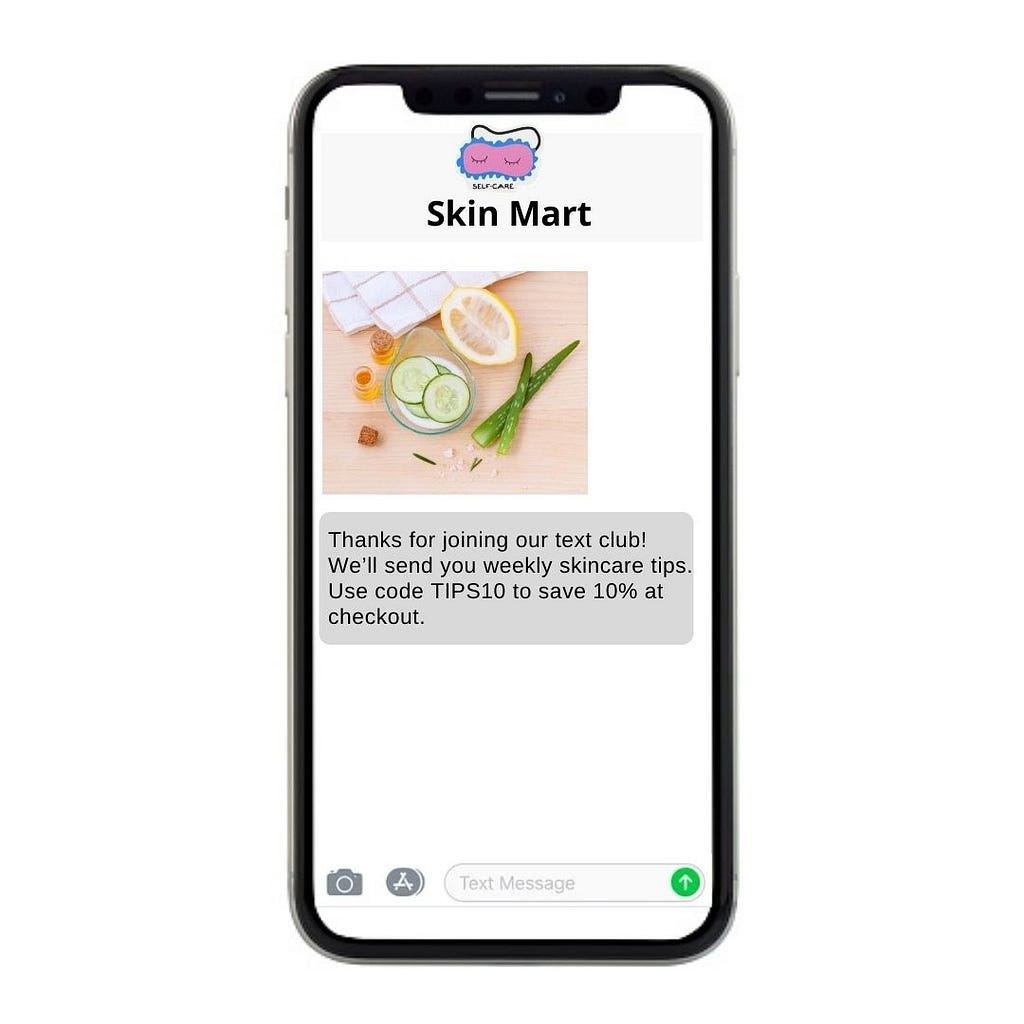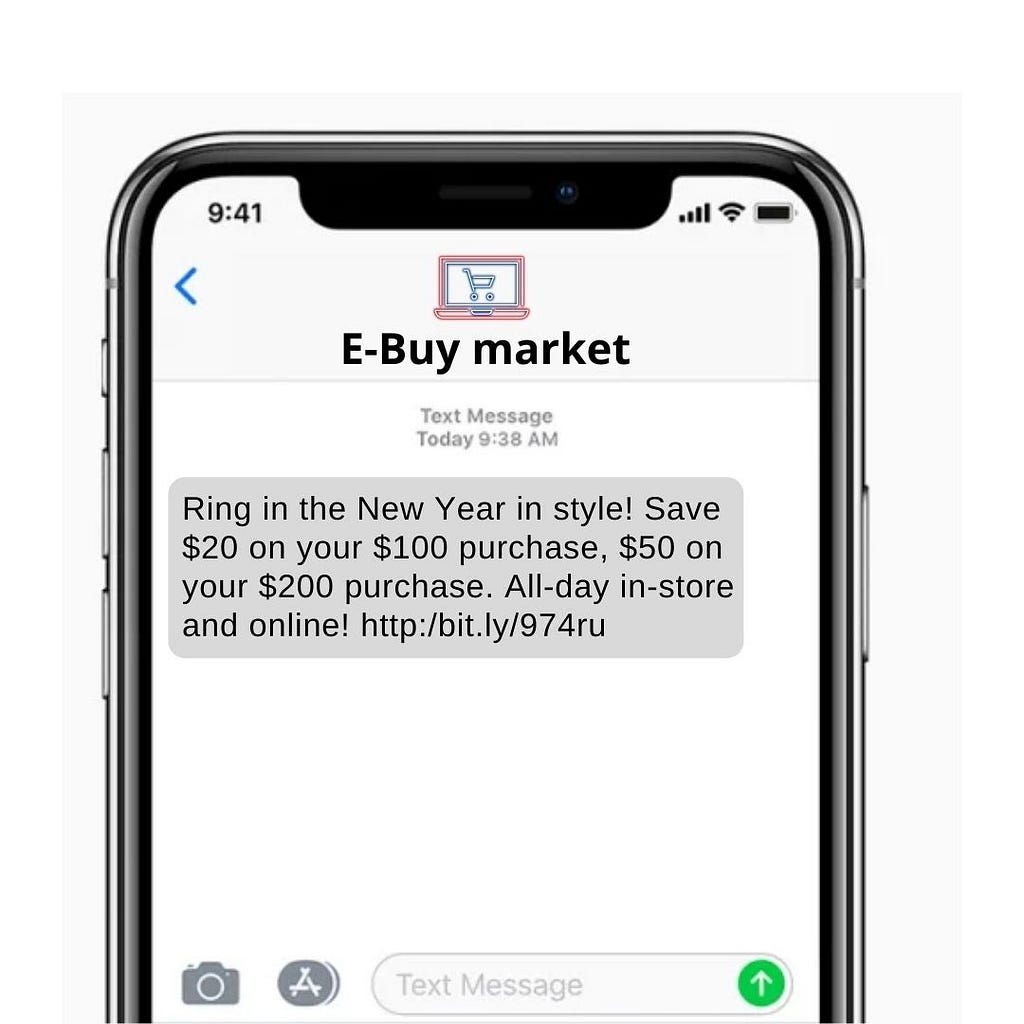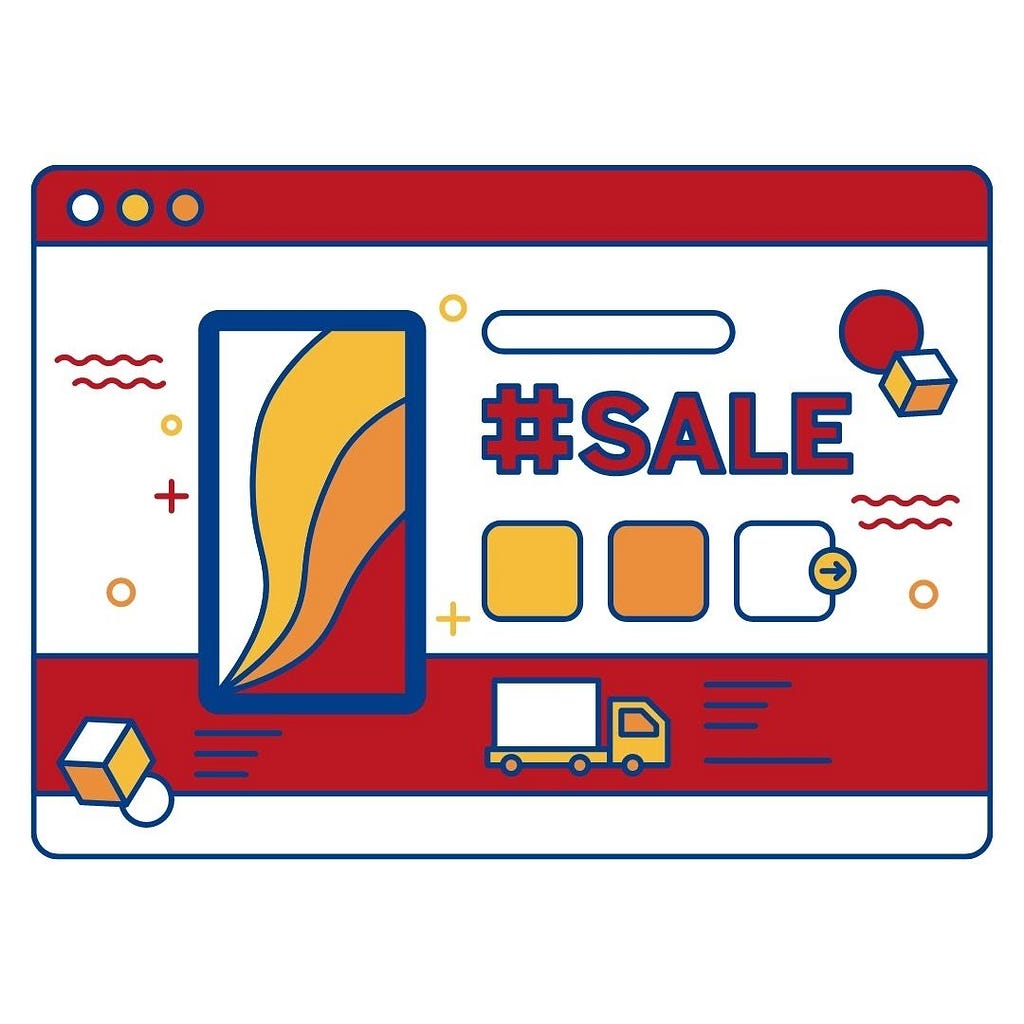Your Google Home or Google Assistant speaker listens intently to your every word to deliver music requests, smart home control, and…
Author: Franz Malten Buemann
-
Bulk SMS Services for E-Commerc
Cloud Messaging services for E-Commerce
Ecommerce, particularly mobile commerce, or m-commerce, is rapidly expanding. While email marketing has long been one of the most popular ways for businesses to communicate, SMS service is swiftly growing rapidly.
Why? Because it can cut through noise more effectively than nearly any other channel. Consider how quickly your company’s marketing communications could be seen — without the requirement for an internet connection. SMS service can assist you in accomplishing this.
We’ve partnered up with professionals to give best practices, top ideas, examples, and more to help you get started with SMS service to increase e-commerce sales.
Here’s how you can use SMS Service for your E-Commerce Platform:
Cloud Messaging allows you to improve your customers’ buying experiences. Cloud Messaging improves your customer interactions with everything from order placement to tracking updates to complex marketing and feedback campaigns. With your bulk SMS marketing campaigns, you can include attachments, QR Code and site URLs. Furthermore, you can track the effectiveness of your ads in real-time and improve your SMS marketing approach.
- Send SMS Promotions: Sending subscribers discounts, early access to sales, and coupon codes is the most common e-commerce SMS services use case. This can be done in the first welcome paragraph or at any time after someone has signed up.
- Order Updates: The single most important element in an online purchase, according to 40% of consumers, is delivery. That’s why keeping consumers up to date on their orders or announcing a shipping delay is one of the most common uses of SMS Service!
- Abandoned Cart Text Messages: Nothing is more annoying than a customer abandoning their shopping cart. As a result, you should use SMS to catch sales before they go completely.
- Provide Text-Based Customer Support: Many e-commerce stores use business texting to respond to more complex consumer questions that require human interaction. For this, SMS is even better than phone calls because most people prefer SMS. (In 2018, 70% of customers preferred a ‘message us’ button on a company website or app over a ‘contact us’ option.)
- Use SMS for Customer Retention: Getting new consumers is difficult, but losing them is easy (and costly). That’s why you should take advantage of text messages to reduce consumer effort and keep customers you’ve worked so hard to win. If you provide a subscription service, you can utilize SMS to send SMS renewal reminders.
- Send timely updates: A missing transaction or a bad customer experience can be the result of a delayed notification. Ensure 2-factor authentication OTPs and transaction updates instantly reach your customers. Experience unmatched delivery rates and speeds with Cloud Messaging.
- Text with attachments: Are you still relying on traditional SMS services? Brochures, purchase alerts, payment receipts, and shipping status can now be sent by simply adding files and web URLs wherever they are needed.
- Get better feedback: With greater response rates, Cloud Messaging’s mobile-optimized surveys enable you to collect client feedback on product quality, purchase, and delivery experience in real-time.
- Build a relationship: Ask your customer to opt-in to receive sales or promotional offers by sending an SMS to your inbox or giving a missed call. Sit back and watch your opt-in list grow.
- Drive website traffic: Promote new products and daily deal offers, as well as a link to your landing page, to boost sales.
- Drip Campaigns: After the first opt-in, the drip marketing campaign will help you to arrange automated campaigns for a specific length of time. Automatically reward your customers for their continuous loyalty.
You can also use SMS Services for:
- Collect reviews
- Order Confirmations
- New product launch
- Send a birthday text
- Send payment confirmations:
When it comes to e-commerce stores, you should make sure that the software has the following features:
- You can text customers one-on-one, send automated texts, and send bulk SMS. Cloud Messaging, for example, is a platform that can perform all two.
- You’ll need an SMS inbox with the ability to manage many conversations if you’re going to use an e-commerce texting service for two-way messaging with customers.
That’s it — everything you need to know about e-commerce sms services in one straightforward guide. The next step is to sign up for a 14-day free trial and try it for yourself.
You can also request a demo if you have any additional queries. Alternatively, you can also SMS or call us at +1 972–652–0046, or visit icloudy.cloudladderconsulting.com
Bulk SMS Services for E-Commerc was originally published in Chatbots Life on Medium, where people are continuing the conversation by highlighting and responding to this story.
-
Challenges Faced by Women in Education
Being an educator isn’t an easy job.
Along with long hours, heavy workloads, and both mental and physical struggles, they also have the responsibility of educating and shaping the next generation to continue evolving the world.
Sounds challenging? Add being a woman into the mix.
Don’t get us wrong — we believe that women can do anything they set their minds to and we want to empower them, however, it isn’t news that women face an alarming amount of prejudice in life.
Women make up 70 per cent of educators. Despite this, they still face discrimination. Be it in their work or personal life, there are stigmas and stereotypes placed on women in our society. We’re talking gender pay gaps, hiring bias, and differing expectations.
This article will delve into the biggest issues faced by educators, in hopes that more of us can work together to change the education environment and make it a more empowering space for women.

-
Alexa is now live
Well, have you been working alone lately? Or are you planning one such work to complete, but worried about your dearly elderly relatives…
-
Is chatbot really a necessity for a business nowadays?
In the past few years, we all have interacted with chatbots in some or another form. And looking at trends, the usage of chatbots will increase further.
Today, we’ll discuss chatbots and how they’re going to benefit the education sector.
With an ever-changing working environment, more and more people are seeking additional education or technical training, either to remain relevant or to stay ahead of the competition. And as a result, a plethora of educational institutions are coming into existence. With an increasing number of players in the market, whether someone is a new player or an established player, acquiring a new customer is always a challenging task.
Similar to many other sectors, getting pre-qualified leads in the education sector is quite an arduous task. Today’s customers have multiple options, be it in selecting an Executive program for an additional qualification, or choosing a pre-school for their kid’s admission, or perhaps customers who are interested in acquiring new art forms such as singing, dancing, playing musical instruments.
Customer’s Buying journey
Customer’s buying journey has changed drastically, thanks to the internet and a mushrooming tech called “Chatbot”. To reap the benefits of this tech to its full potential, one has to have an understanding of how a chatbot can be a blessing in each stage of the consumer buying process. Let’s dive into that.
Whether a consumer is buying a physical product or a services product, they tend to go through the various stages (consciously or unconsciously). Each stage has many sub-stages. Identifying and targeting those stages to craft the marketing strategy will definitely impact significantly in the outcome.
Tradition customer’s Journey has 3 stage
- Awareness stage
- Consideration stage
- Decision stage
To be ahead of the competition, businesses have to focus on how they can make life easier for their potential customers with the use of the latest technology like Chatbot.
Awareness stage:
Awareness is the first and foremost stage of the consumer buying journey. It is the most crucial stage for both consumers and service providers. We can label this stage as a problem recognition stage for a consumer whereas an opportunity for the businesses. In the awareness stage, potential customers are likely to realize their needs and do a little bit of research on their needs.
Over the years, businesses have engaged in different kinds of traditional advertising such as television advertisements, Billboards, newspaper magazines, etc to spread awareness about their product. But from the last few years, advertisers are replying more to online advertisements on various platforms like Facebook ads, Google ads, etc. the most important reasons to choose Online/digital advertisements over traditional advertisements are
- The accessibility of high-speed internet made more and more people available online than ever. So these Digital ads become self-nominated.
- Digital campaigns are more measurable than the traditional advertisements
- It is a cost-effective option with higher returns.
All these advertisements are good but they all have one flaw, they are one-way communication. To increase engagement with visitors/potential customers, a business needs a better option other than just navigating the customer through a tiring website. Chatbot can be the best tool to have two-way communication.
Let’s take an example of an Education institute or learning center,
Let’s assume an Educational institute is running a targeted campaign over Facebook or any other digital platform to spread product awareness. The potential customer came across that ad and he/she is curious to know more about it. To satisfy his/her curiosity, potential consumers are likely to turn to a very platform on which they encountered the ads. The chatbot can be very useful to answer customer queries and gather important information like course details and personal information which helps the sales person to reach out to the customers.
At the awareness stage, its marketers’ job is to drive the customer to the chatbot and the chatbot will handle the rest. Marketers can link the chatbot with a Facebook page or they can share a link to the blog.
Consideration stage:
As we move forward in the consumer buying journey next stage come is the “Consideration stage”.
Till now, consumers realized their need and made some research about it, This is the stage where potential customers seek some fundamental information like Fee structure of the course, duration of the course, batch timing, etc. This stage is all about seeking various information. A quick and reliable response will always help increase the customer experience as well as the company’s overall image. Chatbot ticks all both boxes. It generates quick and reliable responses repeatedly that too 24*7. Many people avoid facing a representative because of a number of reasons. The chatbot will help those potential customers to access the required information at their convenience. Moreover, Business owners will get the notification whenever a lead is being generated, This will help them to attain the consumer requirement quickly and to make follow up based on that.
One of the good chatbot examples is PK- Educations Chatbot, it’s an Al -Chatbot developed by Pragnakalp Techlabs. PK-Educations is a very basic lead generation chatbot that is integrated on various chat channels such as Website, Google Assistant, Facebook Messenger, Telegram. PK-Education helps business owners to have better customer engagement across the chat channels.
So coming back to the consideration stage, it is the stage where chatbot comes most handy and makes an actual difference. As we stated earlier, consumers make lots of research regarding products and services. It’s the time when new potential loyal customers make or lose the business.
Chatbot also helps the business to scale up the cold calling by automating the prospecting. At this stage it’s a marketer’s job to convey that the particular product or service is best suited for the customer and knowing the fact that no “one product” fits for all, it becomes important to understand the customer’s requirement and suggest the product or services accordingly.
Decision-Making stage:
Supposedly the last stage in the Buyer’s journey, the “Decision making”. It’s a step where customers generally add up all the aspects of the business and compare with others (consciously or unconsciously) and take the decision. It’s a time when businesses pitch the product. With well-crafted dialog and flow, a chatbot can help businesses and customers by suggesting the product according to their response and even schedule the demos if required.
Also, there are chatbot that helps the businesses to manage the Admission process through the chatbot itself which help in scaling the activities with lesser efforts
When it comes to the education industry, Chatbots are an excellent way to nurture the consumer at every stage of the buying process. Many studies are suggesting having positive experiences when they are talking to a chatbot. It is a great way for any organization to communicate with its customers. Chatbots can also help educational institutes to learn more about their prospective customer, and they can help businesses to deliver the primary information quite effectively.
Is chatbot really a necessity for a business nowadays? was originally published in Chatbots Life on Medium, where people are continuing the conversation by highlighting and responding to this story.
-
8 Business Automation Ideas to Save Time and Money

Making smarter decisions about your business processes is critical to ensure lower time-to-market and high ROI. Future fit technology executives know the importance of optimizing business operations efficiency and workflow processes to remain ahead in the competitive landscape.
Whether your organization is small or large, now is a good time to create automation opportunities by integrating the Robotic Process Automation model into your existing processes. And start streamlining business operations ranging from automated emails to optimizing customer services that enhance the business value & ROI.
This blog post has outlined the best business automation ideas that any organization or department can get started with.
Accounting Tasks
Most accounting processes are time-consuming and need manual intervention. By automating all possible steps involved in the task, organizations can save time, reduce errors, and enable teams to spend more time on strategic work instead of a host of repetitive tasks.
Take accounts payable (AP), for instance. Several organizations are still manually handling their accounts payable (AP) processes. Integrating RPA for the processing and payment of invoices saves time and money. It also eliminates data errors and helps mitigate fraud risks through a system of “touchless” controls that happen behind the scenes.
Data Backup
Today almost every business across the industries is data-driven. Therefore, it becomes critical for companies to ensure data privacy, accuracy, and safety. Moreover, an unsecured website is vulnerable to cybercriminal activity. And this is possible with RPA bots.
Automation benefits many data management software that expand data backup possibilities. So an automatic backup process not only protects your valuable data but also enhances your customers’ trust.
Not every business knows how to integrate automation solutions for data backup. This is when top RPA automation companies can help. They offer comprehensive and customized RPA automation services solutions to businesses across the industries.
Email Automation
Email automation makes the email process seamless for marketers and eliminates repetitive manual efforts.
Most employees spend hours of their day reverting to emails, many of which are irrelevant to their regular responsibilities.
Businesses organize their piles of daily emails and respond to relevant messages quickly and efficiently by automating the email process.
Onboard New Workers
Onboarding new professionals is a continuous task in any business. And no doubt, it is pretty lengthy that goes for several weeks and a daunting process that requires a lot of paperwork.
Onboarding is essential for ensuring continuous involvement for recruiting teams, hiring managers know-how to carry out tasks to predefined business standards, and being clear on what processes are required to implement.
With robotic process automation solutions, you can easily send documentation, approve permissions, and provide workers with the relevant training.
Automation also minimizes the risk of errors and data leaks — if you do find any errors, you can correct them with ease and quickly for the next person you onboard.
Generating and Distributing Report
If spreadsheets and reports are a critical part of your everyday business operations, automating report generation and distribution will streamline your process in less time and effort hassle-free.
Businesses can use robotic process automation tools to generate automated reports and distribute this information, and recipients can analyze historical data, forecast future performance, and make optimal decisions.
Meetings Automation Platform
Managing and organizing the events and activities, creating a calendar, and setting up meetings have traditionally been handled manually. But several different automation platforms have made it easier to deliver seamless internal and customer engagements.
Automating meetings using automation platforms (MAPs) can optimize the communication process before, during, and after the session and meet the company’s business objectives.
Immediate Response to Contact Forms
After submitting a contact form through a business website, users expect a fast response. However, if they don’t receive any response, it makes them feel like the message has been lost in a void. And they move to another business website offering the same services.
Even if you do revert finally, the possibility of converting the lead has already dropped.
An easy way is to send a thank-you message that assures your prospect customer that someone from your team will be contacting them soon.
Credit Card and Loan Approval
Leveraging automation benefits in carrying out the credit card application approval process is a win-win deal for banks. Usually, credit card processing and loan approvals take an extended period to validate the customer details before approval.
Banks can quickly streamline the process and approve/disapprove the application faster by implementing robotic process automation tools and saving time from investing in manual and repetitive tasks.
What’s Next?
With this business automation process, organizations can optimize workflows and operations efficiency. Moreover, it enables you to reduce the human labor required and eliminate repetitive tasks. Business automation factors optimize a company’s workflows and make the processes efficient, faster, and seamless.
So, make sure to integrate automation opportunities in your existing processes and stay ahead in the competitive landscape.
8 Business Automation Ideas to Save Time and Money was originally published in Chatbots Life on Medium, where people are continuing the conversation by highlighting and responding to this story.
-
Google Assistant and YouTube to be incorporated into Volvo cars
It has been announced that Google is about to join hands with the Volvo car group to integrate its Google Assistant features along with…
-
How Do Chatbots Help in Improving your Brand Experience?
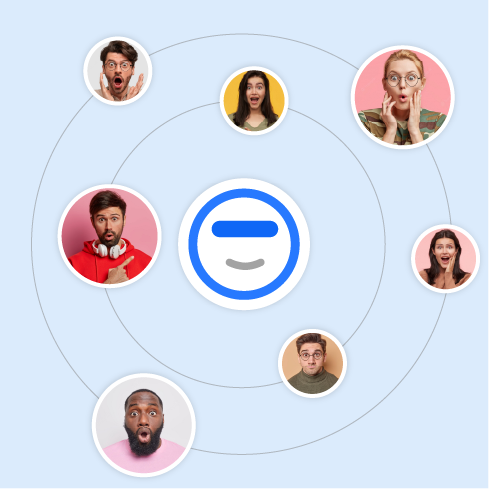
In today’s competitive market, businesses must ensure that their brand creates a unique experience for customers.
Chatbots allow customers to engage with your brand on the internet and get information and suggestion on products or services. All this without getting bogged down with repetitive tasks like waiting on hold or being directed from one department to another.
This means that customers get information faster, translating into more sales and better relationships with your company overall.
Let’s take a real-world example to see how it would work. If a customer orders flowers for a wedding on Wednesday, the chatbot will be available round the clock over the weekend in case there are any issues or changes that need to be made on your order, or maybe you want to track your order or order something extra.
Being a fast and effective way to enhance your brand experience, chatbots help increase customer satisfaction and help your company stand out from the competition.
What is a Brand Experience?
A critical aspect of branding involves creating an experience for your customer that makes them feel cared for and special.
A key to enhancing this feeling of caring and compassion is how you communicate with them in a memorable manner, like say sending a personalized letter or email or giving pleasant customer service.
It should be quick, personalized, friendly, and show you really do care about their needs as a consumer by sharing news about what’s going on in the market so that it pertains directly to them.
That way, you provide the assurance of being there whenever they need you which will instill good feelings towards your company long after they’ve received it.
‘Brand Experience’ incorporates all channels and touchpoints with customers where your brand exists. It is not just a branded website or ad campaign, but rather everything your consumer comes in contact with — be it real or virtual.
Everything you do should enhance your brand experience by engaging your consumers along every step of their journey with you. If done right, an exceptional brand experience can create customer loyalty for life.
Why is Brand Experience Important?
‘Brand Experience’ is a term that describes how people relate to your brand and all of its touchpoints throughout their lifetime-from first impressions to long-term relationships, whether direct or indirect.
The brand experience aims to help create consistent and memorable customer experiences that positively affect your business.
According to a study by McKinsey, COVID-19 has forced companies into investing and providing digital services for a better customer experience. 80 percent of companies believe that their core business model should be digitized to remain economically viable
A strong brand experience is more important in the post-COVID era when businesses’ inability to scale up support services resulted in a poor customer experience, reduced sales, and negative word of mouth.
Businesses can overcome these challenges by investing time and money into marketing automation tools (particularly chatbots) so that customers have all their questions answered before making a purchase.
If done right, chatbot marketing can transform lead generation from an intrusive affair into a fun and engaging conversation that both parties enjoy.
By intelligently responding to each question at the right moment, businesses can remove stress from customers’ buying decisions and build strong connections between consumers and their brands over time.
How can Chatbots Elevate Customer Experience?
Modern chatbots have evolved from being robotic (and no code) to highly conversational, giving customers a personalized, humanizing interaction that sets your brand apart from the experience it offers.
Developing an advanced customer experience requires nothing less than reinventing and reimagining your company’s approach to interacting with consumers.
With chatbots, brands can maintain a consistent, free-flowing, and positive customer experience.
Here are some principles one should focus on to offer a better customer experience using chatbots:
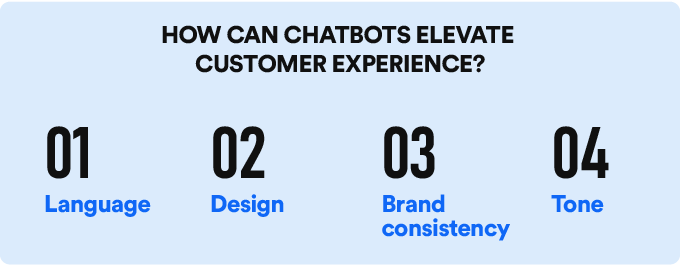
- Language: By speaking language as your target audience, you show that you value what they have to say and make sure everyone can connect in a meaningful way. This can be achieved by doing simple things like using catchphrases like How you doing?”, millennial lingo, etc.
- Design: By giving it character, e.g., a mascot or friendly face, helps businesses get a longer recall value. Besides being warm and welcoming, customizing the design of your bot not only increases engagement but also gets people talking about your brand. Big tech companies are investing heavily in this as well. You would definitely remember the Salesforce characters from their site, or the famous Microsoft Office assistant Clippy.
- Brand consistency: Designing your chatbot to be consistent with your brand colors, themes, mission, and tone of voice helps establish trust right away with potential customers because it proves you know exactly who they are. These things usually should not change, and even if it needs to, there would need to be a rebranding exercise that covers all aspects of it, including the brand experience on the chatbot.
- Tone: The tone of communication will help you get better engagement with your chatbots. Depending on the target persona that would be visiting your website you can determine what should the tone of the conversation flow be like in your chatbot, i.e., friendly, professional, witty, etc. The dominance of Apple Siri has shown easy it is to get the brand to be viral with witty and informative answers to questions. During its launch screenshots of witty replies from Siri went viral over the internet.
How do Chatbots Help Improve your Brand?
As technology expands and becomes a huge part of daily life, chatbots have become a fun and useful way to communicate with your customers. If you’re trying to figure out how to market your brand, a chatbot can be a quick way to find out what needs changing or what people love about your business!
Let’s take a look at how chatbots can help your brand grow.
High brand recall
By leveraging chatbots to interact with your website visitors and potential prospects, you can create awareness about your brand. People will remember your brand better when they have such a unique experience with it.
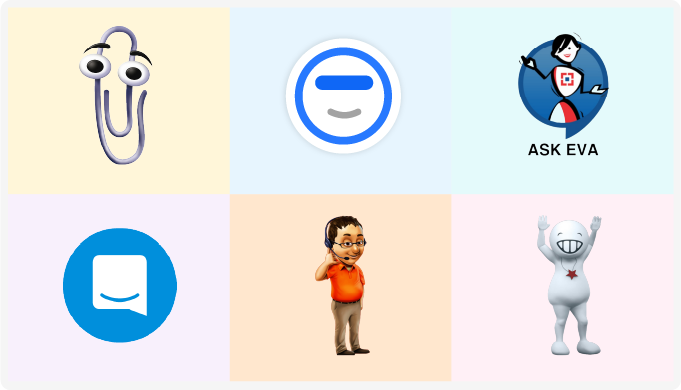
For example, HFDC bank in India uses Eva (an AI bot) for customer support. It had launched it across its website with a visual mascot-like appearance of a lady. With the positive response the bank received, in terms of user adoption as well as users sharing its benefits via word of mouth, they’ve seen a self-propelled push towards self-service.
This helps them in creating higher brand recall value, meaning more people know what Eva is and what it can help them with. And as more millennials join banks, they are more likely to engage and refer Eva.
Increased brand loyalty
When there is such an overabundance of brands, it is sometimes difficult to keep consumers interested and coming back for more. It can be challenging to get consumers to choose your brand over other well-known competitors. Here’s where chatbots can help.
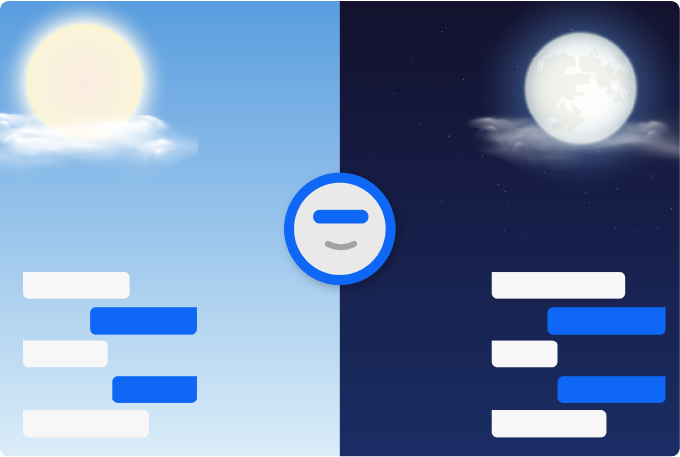
As chatbots are easy to interact with and available round the clock, users develop a positive relationship with the product. This results in customers spending more time on your website and engaging with your content, which translates into higher brand awareness for both you and your business.
Moreover, when users are happy with how easy a chatbot is to use, they’re likely to recommend it to others — and brand loyalty increases as a result. In addition, brand loyalty can decrease churn rates. Customers who stay loyal tend to spend much more money than those who don’t!
As a result, it helps businesses get better Customer Satisfaction(CSAT) and Net Promoter Score(NPS) scores, ultimately helping them get better referrals from customers.
Welcoming and friendly
Chatbots are more proactive in their interactions with users, meaning it immediately initiates conversations with users when it feels there is a need for it. Unlike humans, where availability is what determines how many users you can talk to.
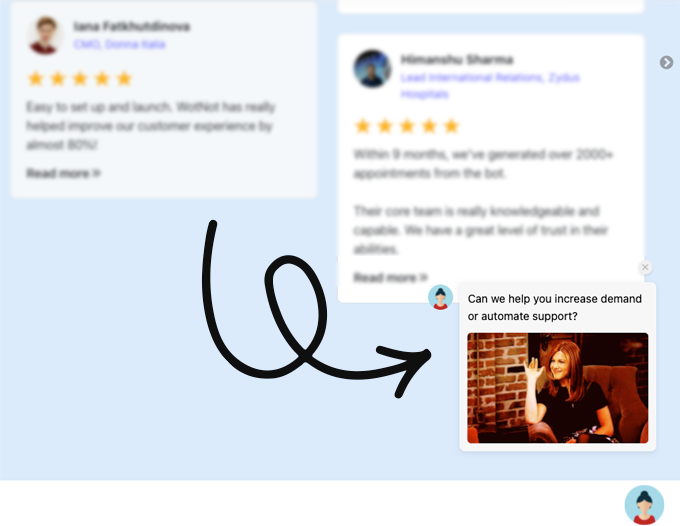
And not just the welcoming nature of the chatbot, but even while interacting with users its personalized approach of talking with users using their names or a tailor-made path helps improve the brand experience.
Personalization coupled with the use of GIFs, emojis, and short sentences helps make conversations more comfortable and easy in a consistent tone creating a sense of familiarity that fosters trust with your users.
Builds trust and credibility
Having bots help humans achieve their goals builds a sense of trust among customers. This sense of dependability and safety adds value to your service quality perception.
For example, if a chatbot solves a critical problem for you in a matter of minutes, you are bound to remember it for a long time. This increases your trust in the brand and builds the credibility of that particular brand.
This is what keeps customers coming back again and again because they know they’ll get their questions answered correctly (and quickly). And if customers have a happy experience, it builds loyalty and leads to higher conversions and more sales!
Reaching new audiences
Chatbots can help you spread your brand’s messaging far and wide by letting you reach audiences on new platforms such as Facebook Messenger, Slack, WhatsApp, and more through word of mouth.
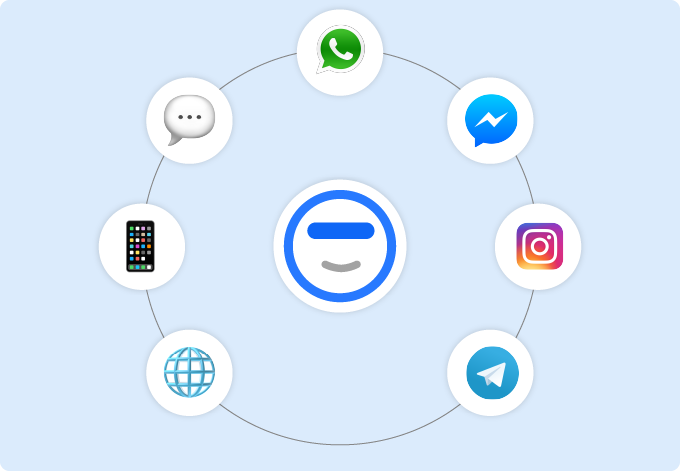
With positive interactions, you can expect to hear about bots and their pleasant experience from your colleagues, friends, or family. Establishing customer trust and loyalty helps you by opening a lot more doors.
How can WotNot help in Customizing your Chatbot?
As your organization becomes more complex, and demand for personalized experiences grows, chatbots will become even more critical in providing exceptional customer service and support. From being a simple and easy-to-use product, it gets transformed into a sophisticated product.
Our team helps you build custom bots on demand, saving both time and money when implementing a bot strategy.
Here’s how WotNot is helping organizations of all sizes in improving its brand experience:
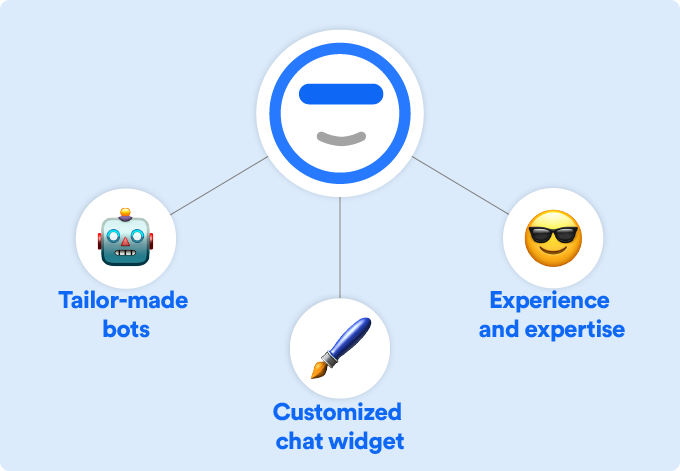
Tailor-made bots
Building chatbots is a complex process involving several activities like research, interviews, design, development, and optimization.
Once your business objectives are shared, our highly experienced and creative conversation design team gets to work in understanding your current experience at great length before getting started in building a tailor-made chatbot to solve the business challenges.
You can expect to eliminate the learning curve involved in A/B testing conversation flows if this service was not availed. Time to success is critical for every business, and we help you achieve that.
Customized chat widget
The experience of a user with a chatbot is defined not just by the conversation flow, but with several other aspects like the color, typography, design, transitions between messages, etc.
Hence tailor-making a chatbot for improved brand experience requires these factors to be worked on.
Chatbots will help you deliver your distinct vibe, just like good marketing should. Our team works hand in hand with your brand team to ensure that the chatbot encompasses your current branding for a better brand recall.
Experience and expertise
Don’t let anyone tell experience doesn’t matter. In marketing, you learn things by constantly experimenting with various hypotheses and reviewing what is working and what is not.
Having delivered over 3000+ projects, our team has collected a fair amount of dos and don’ts on building a chatbot catering to a certain use-case.
This is not to say that you cannot build a bot on your bot, you definitely can, however, to achieve your objectives, you would probably require to iterate a few more times.
After all, there are no proven chatbot marketing techniques out there that you can simply copy and implement. As every business is different, it requires a customized approach towards interacting with its users.
Conclusion
Chatbots will dramatically change how we interact with businesses, and we need to prepare for that future now. Although COVID has passed, its ripple effects are here to stay.
Businesses are more likely to find more digital research being performed by their customers before having a walk-in to their offices or stores. And in addition to it, to get better ROI from their advertisement campaigns, this would be really crucial.
To wrap things up, chatbots are definitely going to be a frequently seen tool in the marketing tech stack of businesses in the years to come. The marketing trends in 2022 show that the shift is taking place.
Originally published at https://wotnot.io.
How Do Chatbots Help in Improving your Brand Experience? was originally published in Chatbots Life on Medium, where people are continuing the conversation by highlighting and responding to this story.
-
SOLIDWORKS NOT UPDATING THE DIMENSIONS OF PART AS CHANGING EQUATIONS
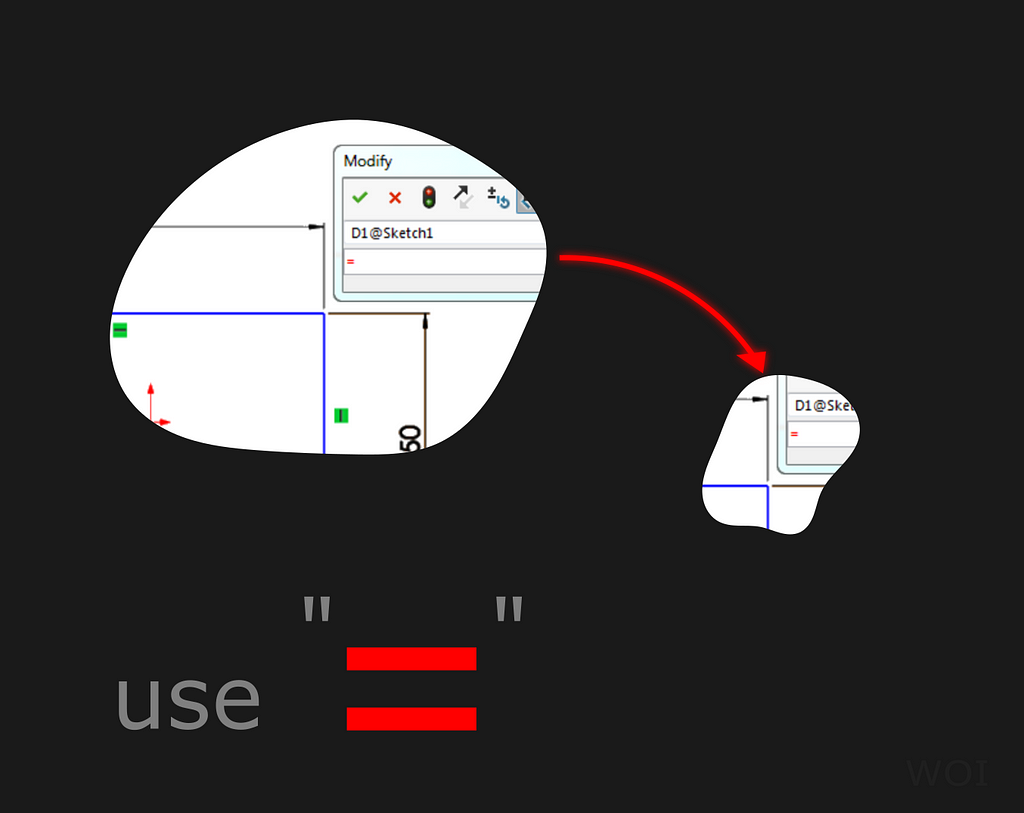
use equal sign to assign a global variable Sometimes we do not focus on small things. In this case it is just a small thing to focus on.
Before entering the global variable you must enter the equal sign to assign a global variable to the dimension. If you do not enter the equal sign, you can create a new global variable, but it will not be assigned to the dimension.
That is the only reason why solidworks do not change the dimensions in part as changing equations.
Because not using equal sign means technically we are not linking the global variable to the equation. This is just a kind of learning that how these small things plays an important role.
SOLIDWORKS NOT UPDATING THE DIMENSIONS OF PART AS CHANGING EQUATIONS was originally published in Chatbots Life on Medium, where people are continuing the conversation by highlighting and responding to this story.
-
AI Role In The Metaverse
Let’s imagine a dream where we are all living in a life simulation…

IMDb “Black Mirror” Fifteen Million Merits Most of you know how Meta could change our world (if not, take a look at this short video: Everything Facebook revealed about the Metaverse). In fact, many other companies will try to make it. Interaction with virtual worlds is already here, there are plenty of cool devices we may use to dive into another reality.
I’m a game developer professional and most of my time I’m spending on designing AI behaviors for my games (from chess AI to AR assistants). I’m not going to tell you about the virtual worlds in this post, but about the artificial intelligence inside. And it’s not only about games, it’s about an advanced interaction with virtual worlds, about how the system could work. Here you will find some basic understanding of how AI could be used in the metaverse and its purpose.
What could AI give in the metaverse?
Almost everything starts from a brand new experience ending having a child in virtual reality.. wow, what? Have I said you about having a child in VR? Yeah, sounds crazy, but I’ll break it later so you will understand more, little spoiler: it’s almost not possible for now.
The main limitation in appearing metaverses in our life is a small number of users who have VR/AR headsets. And that’s logical, people don’t want to use big and heavy helmets with lenses which could give you a headache after just a few hours of staying inside. What can we give people to join these worlds? How do share this experience with more people? How to move the world from using PC to VR/AR? I’m sure blue-chip IT companies are thinking about answering these questions. I’ll try to answer another question, what AI could give us in those virtual worlds and extend our experience? I hope this writing will be useful for developers and gamers who someday will join virtual worlds. Who knows, perhaps my writing will be seen many years later when we all will be joined into the new MetaWorld.

Meta presentation about metaverses Alright, AI or artificial intelligence is basically a collection of behavioral instructions based on decisions (predicted or hardcoded) in electronic devices (it could be robotics, games, or some hybrid machines, etc.).
In games, we have AI that should give us the most fun from the game. Let’s remember the Mario series, there are plenty of different NPC’s you may see during the gameplay, such as Goomba or Hammer Bro. They all have different behaviors. Without enemies, the game would be too boring.
In hybrid machines or robotics, AI usually plays the role of assistants in doing typical, monotonous work or dangerous for people’s health (like observing active volcanoes or working with radioactive liquids).

Well-designed futuristic sketch with Microsoft Hololens. AI in the metaverse (it could be AR, VR, XR, or any other types of presenting metaverses where we may feel deeply integrated. In fact, the PC game Second Life is counting as a metaverse game too) could be any of mentioned above. Imagine a game shop seller, a robotic system that investigates volcanoes, a virtual teacher, a cameraman at a concert, your personal fitness trainer… and put everything into one world. Or separate it. How you wish, your possibilities are infinite (at least for now, when everything is still under development and we’re not having strong restrictions in creating virtual worlds).
What about usage?
Sure, if you’re a developer or a content maker, willing to create some kind of AI in a brand new meta world (let’s imagine it already exists and millions of people are dived into it) it’s totally possible for you to sell goods through a metaverse. How would you profit from implementing AI? What type of AI should you choose?
First of all, we need to have a specific goal for your business. Could you sell virtual goods or NFT’s? Skins, new weapons, or maybe you’re 3d artist or fashioner who wants to sell your own t-shirt to be worn in a virtual world? Would you sell it by yourself or just let it fly on a banner? Of course, if you’re a digital representer of Lui Vuitton perhaps people will know this brand, but competitions haven’t been canceled even in metaverses. Anyways even for big companies. Who are your sellers? Who are your promoters? Do you think it’s a good idea to hire a seller that would help buyers to determine if shorts would be a good fit for a specific hat? I think no one will do that. It’s not fun. It’s not what people would do in virtual worlds. So put an NPC! Alright, you’re getting security too. Just pay small fees for their usage. How would you benefit from them? In the same way as in real life.

Have you ever seen animators? In my origin country, there are many. Could we make them as funny AI’s in virtual worlds? Sure. The needs of AI’s in business will depend on how detailed will be made those worlds. Will it have a teleport to reach big distances or do you need transport? If you need transportation, do you want to drive a car and spend time on it or you would better call your AI assistant to bring you to the target?
Conclusion
Alright, we see that metaverse could extend our horizons of imagination, share more knowledge, sell brands and goods, give people a chance to touch some virtual creation. Isn’t it cool? We’re diving into another world, the era of virtual reality, so everything around this technology will be improving every year. Remember the time when the internet and personal computer just came into our world. How it was and how it looks nowadays. Just give metaverse a little more time to let people understand the whole concept, how it should work and how to develop it user-friendly and useful.
I’d like to share more info about the practical development of AI in virtual reality and how to develop your own VR Tamagotchi in Unity. So stay tuned!
Feel free to write your questions and subscribe to my social media:
Instagram: stan.kryvenko
LinkedIn: sgkryvenko
AI Role In The Metaverse was originally published in Chatbots Life on Medium, where people are continuing the conversation by highlighting and responding to this story.
